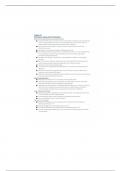Class notes
Biol 105 Chapter 12 Notes
- Course
- Bio 105
- Institution
- Queens College
This is a comprehensive and detailed note on Chapter 12; inheritance,genes and chromosomes for Biol 105. *Essential Study Material!! *For you, at a price that's fair enough!!
[Show more]



